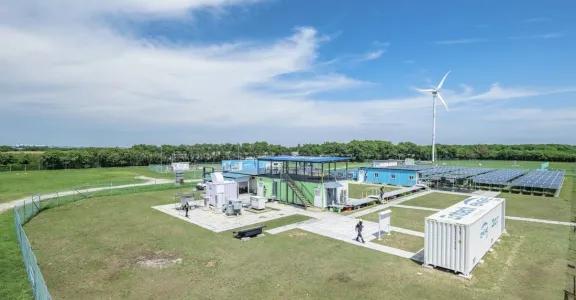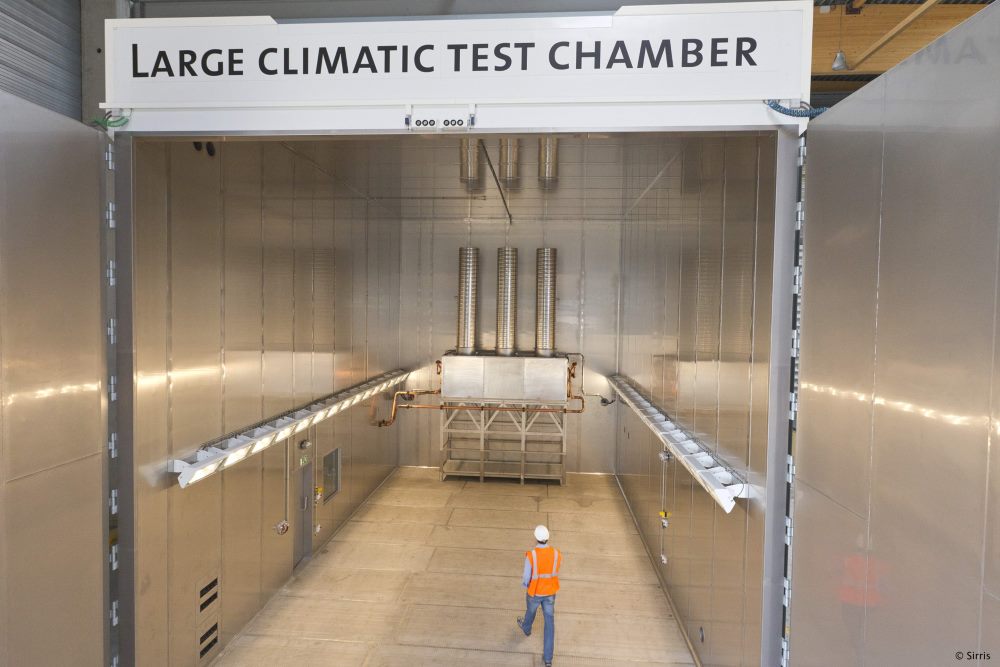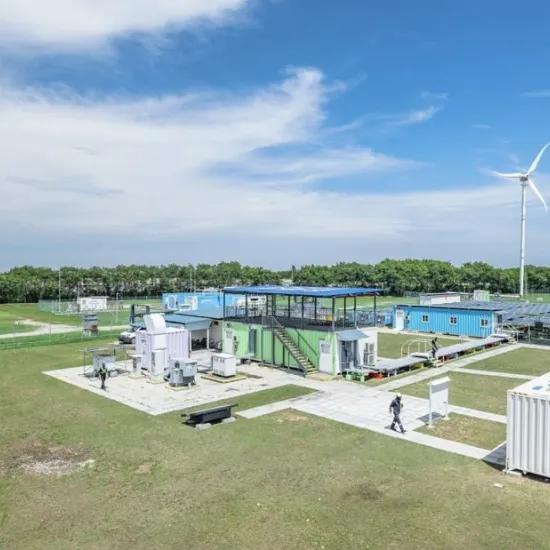Review on IERE General Meeting and Singapore Forum 2023
From 21 to 24 November 2023 the 23rd IERE General Meeting and Singapore Forum, co-hosted by Engie, took place in Singapore. Its main topic was "Accelerating the Carbon-Neutral Energy Transition for Industry and Territories". Pieter Jan Jordaens, Sirris expert in energy transition, was present, both as a participant and as a speaker, to share test and demonstrations experiences set up in Belgium. A summary.
In a short series of articles, our expert Pieter Jan Jordaens highlights some of the most interesting findings relevant to learn from in respect to market opportunities abroad and as an inspiration for our own regions. The presentation he gave at the conference aimed to give an answer to the question ‘How to accelerate learning by real scale system testing in harsh environments?’, with a focus on the role of climatic validation testing of energy transition technologies operating in demanding worldwide markets.
The global energy transition necessitates efficient and reliable equipment for success. Validation testing of critical technologies, such as (offshore) wind turbines, floating PV tech, hydrogen generators and battery storage units, operating in extreme climates, is vital for performance and safety.
What cases show us
Case studies over the past decade emphasize the significance of testing transformer systems in harsh environments. New bio-degradable dielectric fluids, for example, offer sustainability benefits, but introduce challenges due to higher oil viscosity. An 15-MVA offshore wind transformer case demonstrates successful cold testing, improving cold-start procedures and reducing waiting times. Transformer pump testing further highlights the necessity of component-level examination, considering factors such as viscosity, motor peak currents and material behaviour.
Additionally, the test cases show the importance of validating hydrogen fuel cells for harsh environments. A notable test campaign prepared a vertical axis wind turbine for operations in Antarctica, verifying reliability and performance under extreme conditions, including severe icing and high windspeeds.
These case studies underscore the important role of advanced test facilities, such as Sirris's large climatic chamber, in accelerating the learning process by providing valuable insights into equipment performance and robustness. Feedback from the industry reveals that aspects considered in failure mode and effect analysis (FMEA) would be time-consuming through simulation testing alone.
Learning from real-scale testing shortens time to market.
As climate change intensifies, adopting such testing methodologies becomes indispensable for a successful energy transition, reducing risks and ensuring equipment reliability. Future investment in larger testing facilities for offshore wind turbines with a focus on cold start-up behaviour further enhances the implementation of the transition.
|
Environmental conditions, such as extreme weather (with climate change in mind), can be harsh and unpredictable, possibly leading to performance loss and inefficiency, influencing the reliability or lifetime of components and systems (because of failure or damage) and may be the cause of safety concerns. Icing, for example, is a real risk, also in areas with a more moderate climate, such as the USA or Western Europe. While weather risks need to be considered more realistically, manufacturers such as wind turbine OEMs should develop reliable, cost-effective weatherproof technologies, to reduce asymmetric risks from future icing events.
Standards and recommended practice help the OEMs, giving them a handhold for testing.
In an ideal case, implementing an environmental testing programme would enable a company to reduce product development time, theoretically reducing costs at the same time.
Key lessons learned
Our key lessons learned are linked to harsh environment testing of equipment used in the energy transition:
1. Cold starts of critical electrical-mechanical components in wind turbines, such as transformer oil pumps, gear boxes and drive trains, are essential to be tested. This need has become higher as a consequence of a few offshore wind energy trends:
- power rating and power density requirement have been increasing (making it more important to choose the best cooling type),
- increasing voltage levels (from 66 kV to 132 kV),
- a shift towards more distant locations in harsher environments and climates, onshore and offshore,
- the growing importance of reliability, availability, maintainability and safety (RAMS),
- the upcoming drive of sustainability, which is responsible for a shift to bio-degradable di-electric fluids.
Test case in the climate chamber: 15-MVA offshore wind transformer at -25 °C
The focus of a test campaign, ordered by Siemens Energy, was on validation of cold-start-up scenarios down to 25 °C, to improve the cold-start procedure and to reduce waiting time after a cold period, using flame-retardant, biodegradable, insulating fluid. During the test project, the transformer was set up in the large climate chamber for three weeks at a temperature of -25 °C. An external cooling circuit of 500 kW was provided to cool the transformer and its integrated heat exchangers. In addition, an external 2-MVA power supply with a variable voltage between 3 kV and 11 kV was provided. Sirris conducted several 24-hour cold-start tests on the test rig, supervised by Siemens Energy.
Testing of a full wind turbine nacelle and generator of small- & mid-scaled wind turbines
Cold-start tests taught us that a temperature of -40 °C is most demanding for yaw gearboxes (they got blocked!), cables became brittle and the power converter would not start (hair dryers were needed to increase temperature to -20 °C), while generator bearings did okay.
2. De-risking offshore operations linked to humidity and corrosion: research by Fraunhofer Institute had already confirmed a link between humidity and electrical failures in wind turbines. The research confirmed a direct correlation between humidity and the technical faults that occur in turbines.
3. Storage technology testing in harsh environments (batteries & fuel cells): a 70 kW fuel cell and a lithium-ion battery pack to supply peak demands of 11 kVA were tested. The goal of this test campaign was to assess the algorithm that optimises the energy taken from the batteries and fuel cell, to increase the efficiency of the fuel cell and thus minimise the hydrogen consumption.
Would you like to obtain the full presentation presented at the IERE conference? Contact us!
Sirris helps Belgian companies translate global trends and insights into the creation of concrete roadmaps and feasibility studies for new products and processes. Want to know how we can help you? Check out our expertise and offering in renewable energy technologies.



